This article was co-authored by Alyssa Chang. Alyssa Chang is a nutrition coach and trainer, based in the San Francisco Bay Area. She uses her extensive background in brain-based neuroscience to work with clients on improving their connections with their brain and body to heal, reach goals, and move pain-free. She holds a BS in Kinesiology and Exercise, Nutrition and Wellness from the California State University, East Bay and is certified in Precision Nutrition, Z-health Performance and is certified by the National Council for Strength and Fitness.
There are 10 references cited in this article, which can be found at the bottom of the page.
wikiHow marks an article as reader-approved once it receives enough positive feedback. In this case, 95% of readers who voted found the article helpful, earning it our reader-approved status.
This article has been viewed 206,870 times.
Ligaments are important fibrous body tissues that connect bones together. Strengthening your ligaments will help increase your overall body strength by giving bones and muscles a solid foundation to work from. Fortunately, there are a number of exercises and dietary steps you can take to increase your ligament strength and benefit your overall health.
Steps
Strengthening Ligaments Without Weights
-
1Include balance board exercises. A balance board, which is a round board with an inflatable rubber section on the bottom, is a popular method for strengthening the tendons in the feet and ankles. These should be available in sporting goods and fitness stores. Use the following technique to perform this exercise.[1]
- Start by sitting down. Standing on a balance board before you're used to it can result in injury.
- Place the balance board between your feet.
- Place one foot on each side of the board. Then gradually push down. The board will probably start wobbling. Work to keep it level while pushing down.
- After you get used to the motion while sitting down, then try standing on the balance board. To start, lean against a wall before trying the exercise with no support.
- Try to keep your balance for as long as possible, but remember to step off if you're losing your footing. Falling off the board can cause injury.
-
2Try balance exercises without a board. If you don’t have a balance board, then you can also start out by just standing on one leg for as long as you can. When standing on one leg becomes easy for you, start closing your eyes while you stand on one leg.
- Make sure that you are close to something that you can grab onto in case you lose your balance.
- After learning how to balance on one leg with your eyes closed, you can progress to standing on one leg on a stiff pillow with or without your eyes closed. Standing on a stiff pillow will increase the difficulty of your balance exercises.
Advertisement -
3Do lunges. Lunges are exercises that will strengthen the ligaments in your legs and lower back. They are also good for your muscle strength and endurance, so be sure to include them in any workout regimen.[2]
- Keeping your upper body straight, step out with one foot until both of your knees are bent at about a 90 degree angle. Make sure your front knee is above your ankle. If it goes passed your toes, you could hurt your knee.
- Bring your back foot forward, then repeat the exercise with your other foot.
- When you've gotten used to the exercise, you can make it harder by holding weights in each hand. You can also increase the level of difficulty of the exercise by closing your eyes as you lunge. This increases the balance difficulty of the exercise.
- There are several other ways to do lunges. Read Do Lunges for a description of different varieties.
-
4Add bridge exercises. A bridge is an exercise when you lay on your back and lift your pelvis off the ground. This will strengthen the ligaments and muscles in your back and upper legs. It is also a great stretch for your back.[3] Read Perform the Bridge Exercise for the proper technique on performing this exercise. The basics are as follows.[4]
- Lay on your back with your arms at your sides.
- Lift your pelvis as high as you can go. Hold it for a few seconds, then smoothly bring it back down.
- Start with 3 sets of 8 reps, then gradually increase the reps as you get stronger.
-
5Use resistance bands. Resistance bands are rubber bands that provide tension for your muscles without using weight. They can be found at sporting goods stores and be used almost anywhere. With resistance bands, you can train almost any part of your body. There are numerous exercises you can do with these.
- Place the band under your foot and take one end in each hand. Then pull up as if you were doing a bicep curl.
- Wrap the band around a pole behind you, then take an end in each hand. Plant your feet firmly and push both arms forward as far as you can.
- Read Use Resistance Bands for other techniques and exercises for resistance bands.
Strengthening Ligaments With Weights
-
1Include dead lifts. Deadlifts are a great workout for your whole body. The motion will strengthen your muscles, tendons, and ligaments in the major muscle groups in your body. Incorporate this into your workout to strengthen the ligaments throughout your body.[5] [6]
- Stand in front of a barbell with your feet shoulder-width apart.
- Bend down and grab the bar about shoulder-width apart. Don't bend your knees yet.
- Bend your knees until your shins touch the bar.
- Straighten your back. Rounding any portion of your spine could result in injury.
- Take a breath and stand up. Hold it for a second before placing the bar back on the ground.
- Read Do a Deadlift for more details on the proper technique in doing this exercise.
-
2Squat with a barbell. Like dead lifts, this exercise places sustained pressure on your ligaments. Specifically, this workout will strengthen your legs and back.[7]
- Set the bar on the rack just below your shoulder level.
- Get under the bar and place it just below your neck. Then grab it on either side.
- Lift the bar off the rack. Step back from the rack and stand with your feet shoulder-width apart.
- Bend down until your knees are at a 90 degree angle. Keep your neck and back straight the whole time.
- When performing the squat, start off with a small range of motion. Drop only a few inches down to start. That way, you'll gradually increase the range of motion your ligaments can handle.[8]
- Read Do a Squat for more details on proper technique. Make sure you're aware of the correct way to perform this workout, or you could injure yourself.
-
3Try bench presses. The bench press is a workout to strengthen your triceps and chest. A smooth motion will help increase your ligament strength in those area.[9] [10]
- Like with squats, start off this exercise with a short range of motion.
- Lie back on the bench with your eyes under the bar.
- Grab the bar and lift it off the rack.
- Lower the bar to your mid-chest, then press it back up.
- Read Bench Press for more details on proper technique for this exercise.
- Make sure you're giving your body enough time to recover after your workouts.[11]
Strengthening Ligaments with Diet
-
1Eat plenty of vitamin C. Vitamin C doesn't only boost your immune system and keep you healthy. It also helps generate collagen, which makes up your tendons and ligaments. This will help keep them strong and resist tears and other injuries.[12]
- Good sources of vitamin C include bell peppers, oranges, green leafy vegetables, and berries.[13]
-
2Include vitamin E in your diet. Vitamin E helps fight inflammation, which is important for keeping your ligaments healthy. Keep these nutrients in your diet, especially after working out, to allow your ligaments to recover.[14]
- Good sources of vitamin E are olive oil, nuts, eggs, fatty fish like salmon and sardines, and wheat germ.
-
3Get enough vitamin D. Vitamin D helps build cartilage, and also aids in calcium absorption. This is important for your overall bone and ligament health.[15]
- Good sources of vitamin D are salmon, shellfish, milk, and fortified cereals.
-
4Include plenty of protein. Protein makes up the bulk of your ligaments, so it is important to make sure that you are eating enough good quality protein every day.[16] Consider adding lean protein such as:
- skinless, white meat poultry like chicken or turkey
- fish, such as tilapia, cod, and shrimp
- low-fat yogurt
- beans, such as pintos, black beans, garbanzo beans, or red lentils
- soy, such as tofu or tempeh
-
5Add more zinc to your diet. Zinc is responsible for maintaining a healthy immune system, in addition to helping with protein synthesis and tissue formation. If your ligaments are injured, then your body will also require more zinc.[17] You can get more zinc in your diet by eating:
- beef
- lobster
- pork chops
- baked beans
- chicken
- cashews
- chickpeas
Warnings
- Although ligaments are naturally flexible, they can be permanently damaged when they are stretched too far.⧼thumbs_response⧽
References
- ↑ http://www.sportsinjuryclinic.net/sport-injuries/knee-pain/lcl-sprain/strengthening-exercises-lateral-ligament-sprain
- ↑ http://www.sportsinjuryclinic.net/sport-injuries/knee-pain/lcl-sprain/strengthening-exercises-lateral-ligament-sprain
- ↑ http://www.sportsinjuryclinic.net/sport-injuries/knee-pain/lcl-sprain/strengthening-exercises-lateral-ligament-sprain
- ↑ http://www.bodybuilding.com/exercises/detail/view/name/butt-lift-bridge
- ↑ http://www.bodybuilding.com/fun/drobson18.htm
- ↑ http://stronglifts.com/deadlift/
- ↑ http://www.bodybuilding.com/fun/drobson18.htm
- ↑ http://www.bodybuilding.com/fun/drobson18.htm
- ↑ http://www.bodybuilding.com/fun/drobson18.htm
- ↑ http://stronglifts.com/bench-press/
- ↑ Alyssa Chang. Wellness Coach & Personal Trainer. Expert Interview. 16 October 2019.
- ↑ http://www.leastening.com/articles/sport-exercise/nutrition-for-tendons-and-ligaments.html
- ↑ http://www.health.com/health/gallery/0,,20745689_8,00.html
- ↑ http://www.leastening.com/articles/sport-exercise/nutrition-for-tendons-and-ligaments.html
- ↑ http://www.leastening.com/articles/sport-exercise/nutrition-for-tendons-and-ligaments.html
- ↑ http://resources.schoolscience.co.uk/unilever/16-18/proteins/Protch5pg2.html
- ↑ http://www.dynamicchiropractic.com/mpacms/dc/article.php?id=45306
About This Article
Ligaments are the body tissues that connect your bones, and you can strengthen them through diet and exercise. Try doing balance exercises to strengthen the ligaments in your legs. You could stand on 1 leg or use a balancing board. You can also do lunges or bridge exercises. If you have weights, squats and bench presses are a good way to strengthen ligaments in different parts of your body. Besides exercising, you should eat a diet high in Vitamin C, Vitamin D, and Vitamin E. Good nutrient dense-foods include bell peppers, oranges, nuts, eggs, salmon, milk, and fortified cereals. To learn how to do deadlifts to strengthen your ligaments, read on!



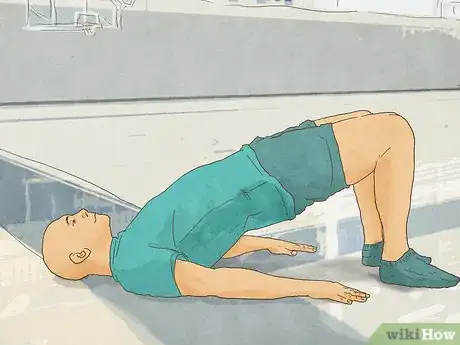
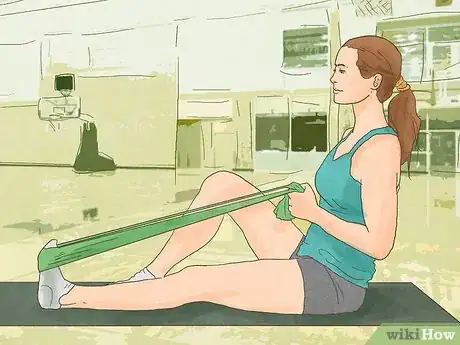





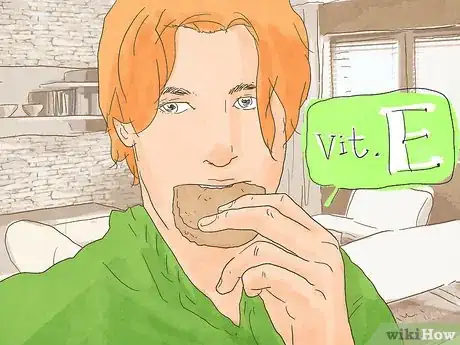


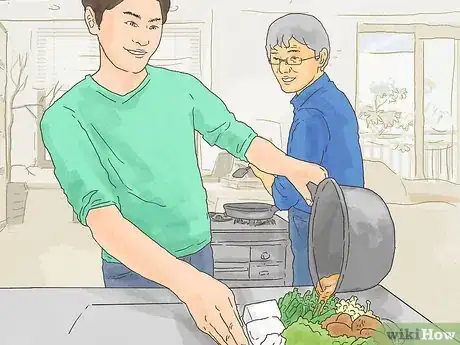
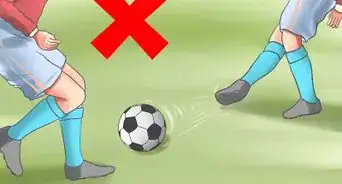


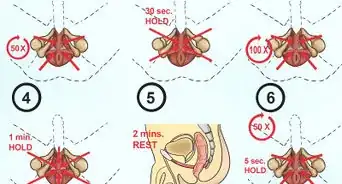


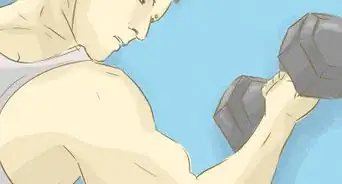
-Step-24.webp)


















































